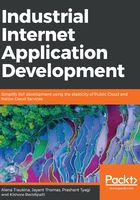
Prescriptive analytics: advice on possible outcomes
We can take the machine learning one step further and, if we can also track the outcomes that happen after an alert/anomaly is generated and use that as a training set to the machine learning algorithm, then we gain the ability to prescribe a number of different possible actions or recommendations as guidance for the solution. In a nut-shell, we are training these analytics to provide us with recommendations on possible courses of action. Prescriptive analytics attempts to use the past outcomes or actions of the users to provide recommendations to help with the actual decisions.
Prescriptive analytics uses many of familiar tools such as data aggregation, machine learning, and business rules and operationalizes these process for daily consumption to help users. Prescriptive analytics works by using historical outcome data as training dataset and, once the algorithm is tuned, it combines it with real-time data feeds at runtime to provide the needed recommendations.
Prescriptive analytics is relatively complex to administer since it requires a certain level of understanding of the domain data, but some general purpose deep learning algorithms such as anomaly detection and K-Means clustering have been used in production settings. Prescriptive analytics is mostly custom in nature, that is, built by a data scientist for a specific problem domain. Few general purpose algorithms such as anomaly detection and K-Means Clustering have evolved to be successful in the IIoT space.